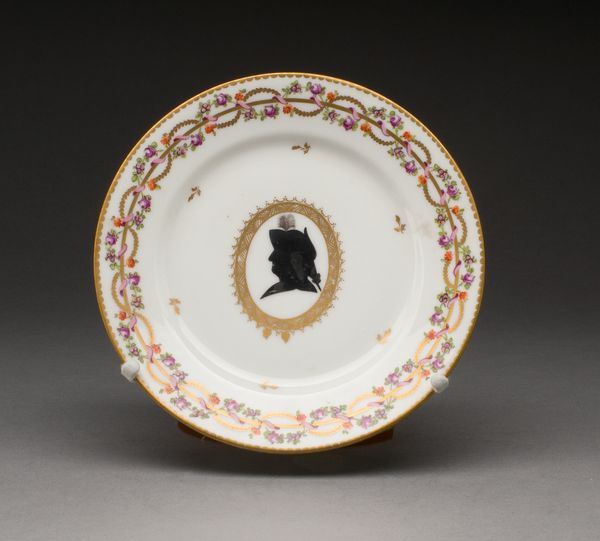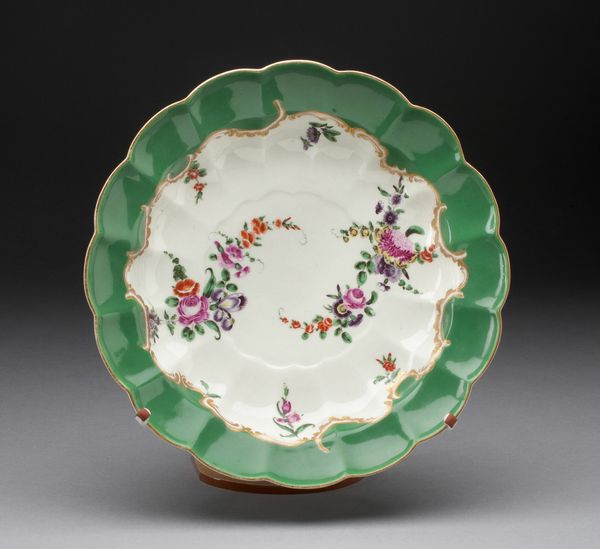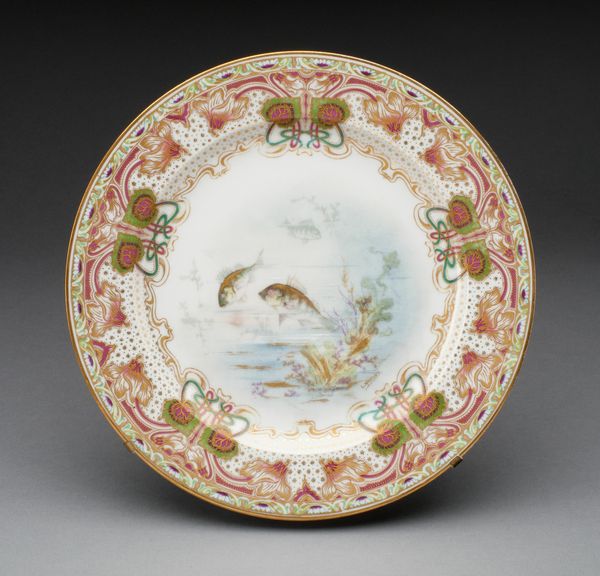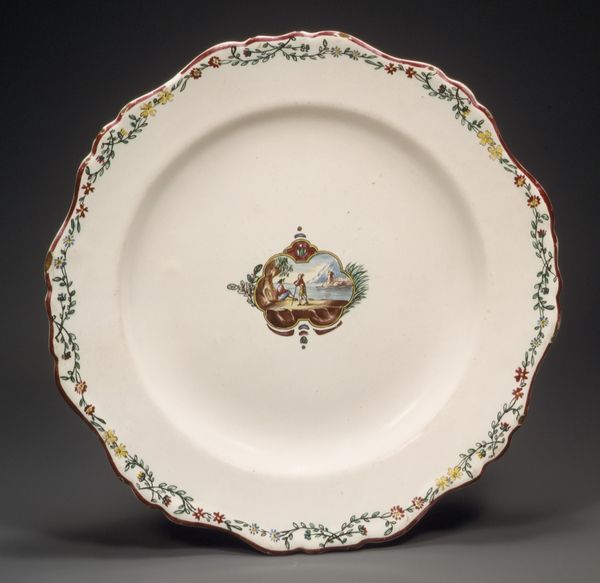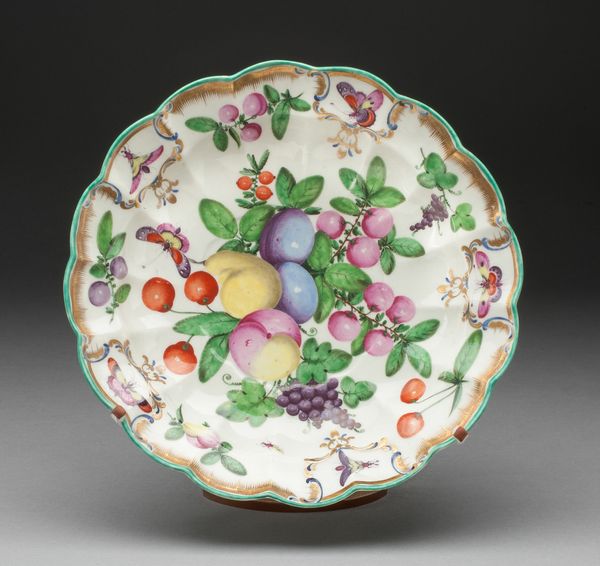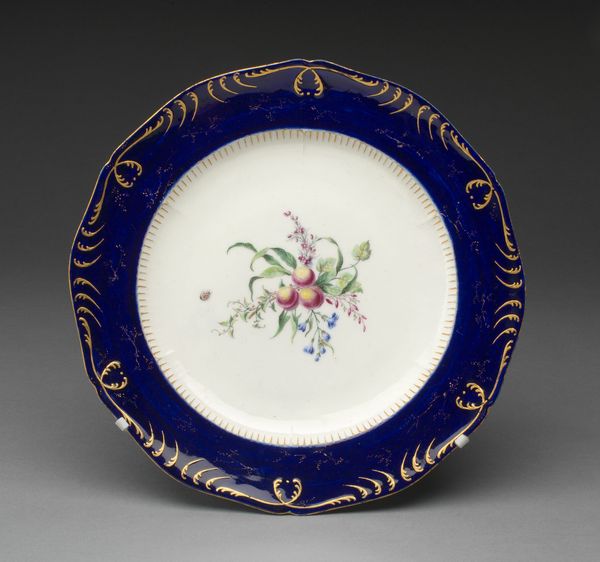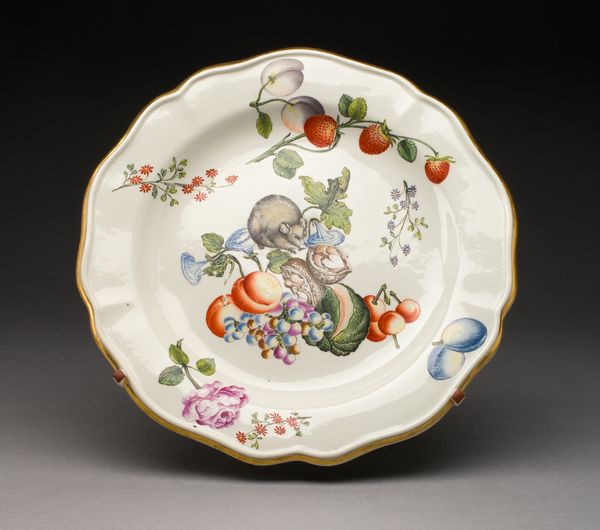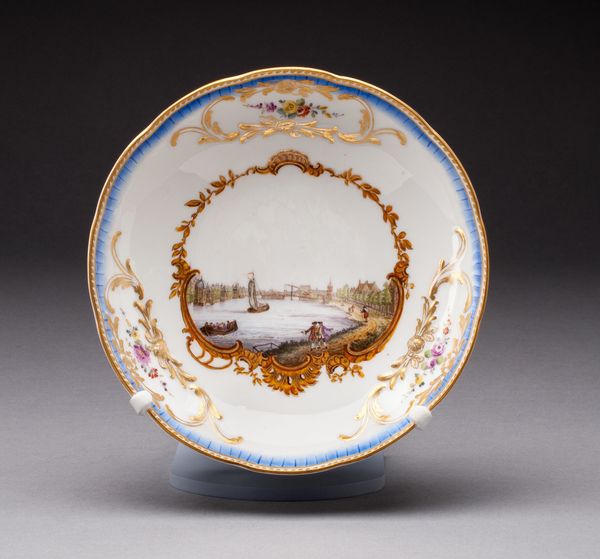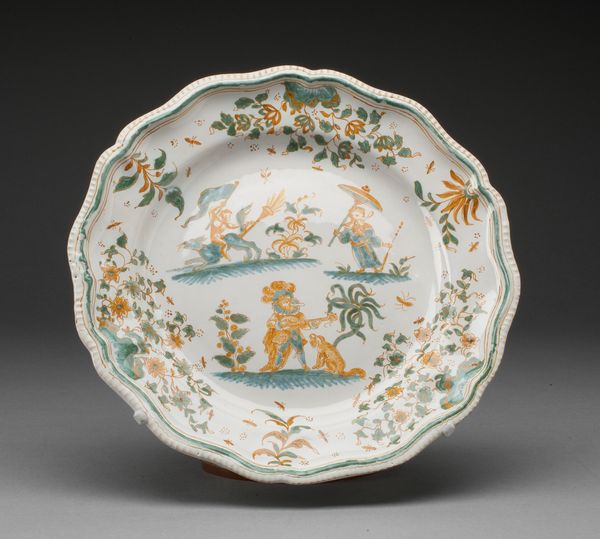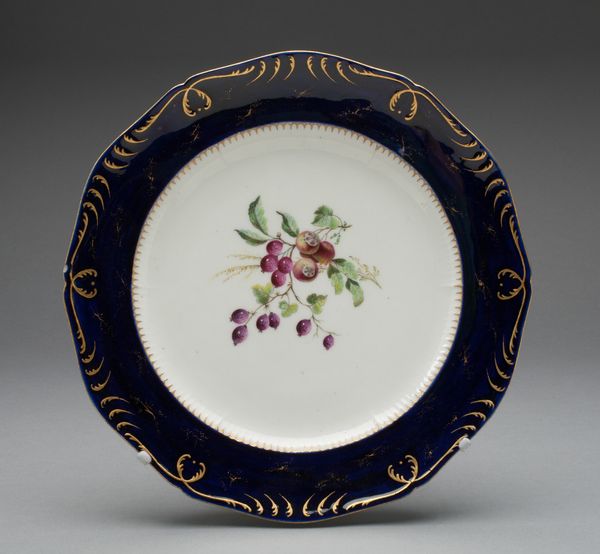
painting, ceramic, porcelain
#
still-life-photography
#
painting
#
ceramic
#
porcelain
#
ceramic
#
decorative-art
Dimensions: 4.8 × 18.9 × 19.7 cm (1 7/8 × 7 7/16 × 7 3/4 in.)
Copyright: Public Domain
Editor: Here we have a delicate porcelain plate by the Worcester Royal Porcelain Company, dating from 1813 to 1819. The central image of a seashell gives it a certain elegance. What do you make of it? Curator: It's more than just elegant, it speaks volumes about the era's obsession with collecting and displaying knowledge. These porcelain plates were not simply functional; they were status symbols and vehicles for demonstrating one's refined taste and scientific curiosity. Consider the context: the rise of natural history as a fashionable pursuit, the proliferation of cabinets of curiosities… where does this plate fit? Editor: It feels almost like a miniature museum piece itself. Curator: Exactly! The depiction of the seashell is highly detailed and presented almost scientifically, reflective of the period’s empirical mindset. But think about the company producing this. Worcester Royal Porcelain strategically aligned themselves with aristocratic and royal patronage. How does this piece reflect, and maybe even reinforce, that social hierarchy? Editor: So, it’s a display of both artistic skill and social standing. Curator: Precisely. Owning such a piece demonstrated not just an appreciation for beauty, but also access to global trade routes—the shell itself likely originating from a faraway land—and the resources to commission such artistry. It represents a confluence of art, science, and social power. Editor: I never considered the social implications of something as seemingly simple as a painted shell on a plate! Curator: That's often the fascinating layer beneath the surface. It invites us to consider how art becomes embedded in power structures. Editor: I'll definitely view decorative arts differently now. Thanks for highlighting that!
Comments
No comments
Be the first to comment and join the conversation on the ultimate creative platform.

